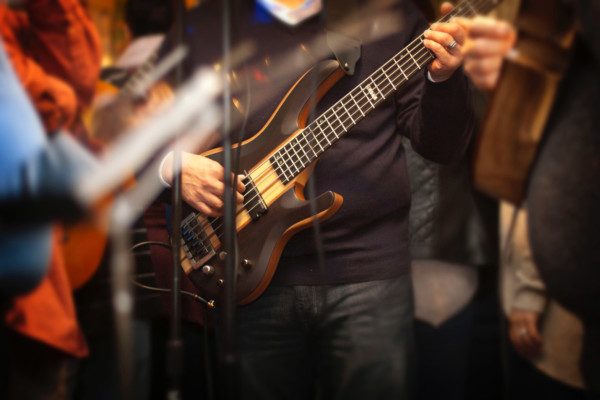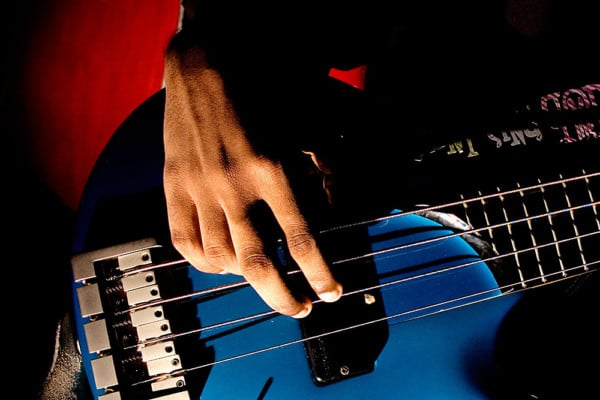Play Other Instruments! Such as… Any and All of Them
Welcome to the final part of the “Play Other Instruments” series. In the last few columns, we took a look at playing piano, guitar, and drums, and I got to describe some of the benefits of noodling around on each of those. Then, I took a step back and decided it was a bit unfair to only address the instruments that I’ve personally had the opportunity to play. Therefore, this column is dedicated to everything else… flute, trombone, didgeridoo, harp, theremin, ukelele, and kazoo. In all seriousness, I wish I could play each one of those, if not to see how it would influence my bass playing, then for good topics of conversation at cocktail parties. But from the practical standpoint, I (and, many of you, I’m sure) would rather invest time and money into more things “bass.” So, just in case you don’t get around to adding a tuba or glockenspiel to your music room, here are a few things you can learn from these other instruments.
Let’s start with some other stringed instruments…
One thing that almost all other “classical” string instruments (violin, viola, cello, upright bass) have in common is the fretless neck. If you’ve played any of these (or fretless bass), you’ll find that far greater attention must be paid to technique and intonation… the tone is most definitely “all in the hands.” Although we can’t disregard either of those playing a fretted electric bass, we certainly have the advantage of relying on our frets as place markers. Classically trained string players spend countless hours focusing on proper intonation and precision since their instrument is far less forgiving. It requires a keener sense of pitch, accurate muscle memory, complete familiarity with the neck, and attention to vibrato and articulation. If you can try to apply each of these to your electric playing, whether its by running scales in different positions, playing with your eyes closed, or practicing on a fretless bass, you may see some positive improvement to your overall tone.
Moving on to brass and woodwinds…
There are quite a few things that I envy about brass and woodwind players, so let’s look at them one by one. First, notes vs. patterns. With any brass or woodwind instrument, one of the first things that you learn is how to create a note and where it is on a music staff. From the get-go, your brain is trained to think in letters… C, Bb, G#, etc. and how to play through scales using these notes. On the bass, we’re lucky in the sense that we can rely on fingering patterns as we move around on the instrument; however, it can be easy to get trapped in the world of muscle memory. While patterns can be relevant on any instrument, it’s more common to get used to how to physically play a scale on the bass, as opposed to which notes are actually in the scale. That said, a great thing to do whenever you play a scale on the bass is to practice it with different fingering patterns, in different places on the neck, while reciting the notes as you play them. When it comes to “licks,” try playing different series of notes with varied fingering patterns. Move the licks around on the bass to see how the key impacts how you can play the lick.
Another benefit of listening to or playing a brass/woodwind instrument is the “section” mentality. As bass players, we rarely find ourselves hanging solely on a chord tone without any reference to the root. It’s easy to have a “root centered” ear and it may take a bit more practice to pick out distinctive harmony parts. Horn player are especially at an advantage since, aside from soloing, they learn how to play harmony parts and hear how it fits into the section. The parts are usually short melodic phrases or stabs and, especially in classical music, they embellish on a particular theme in the composition. As an experiment, try listening to records with horn sections and attempt to follow or transcribe one player’s part. Not only will you have to pick out the chord tone, you’ll have to follow the phrase and see how it changes.
And finally, soloing!
Brass and woodwind players frequently take the melody (or parts of the melody) in classical and jazz. Not only do they have to interpret it in front of the ensemble, but, they often have to follow it up with a solo of their own. This requires an attention to phrasing and rhythm that is quite unlike what we learn as bass players. Take a listen to how a sax player plays through a jazz melody… they rarely play something “exact” (compared to what’s written), and instead, embellish on both the rhythm and how they approach the pitches. Then, when soloing, they may apply similar phrases to remind listeners of the melody. If you can sing along (or play along) to solos, you’ll probably find some unique melodic ideas to incorporate into your playing. It may be easier than mimicking a guitar solo (since we can’t bend strings too far or get away with playing many chords), so you may be able to relate better to an instrument like sax or trombone.
While I can probably come up with some reason or another to play a particular instrument, I’m sure that those who’ve actually had experience playing other things can lend a hand as well. So, whether you played the clarinet in your elementary school band or decided to pick up the bagpipes during a mid life crisis, let us know how it has impacted your musical knowledge or contributed to your ability to play bass!
Ryan Madora is a professional bass player, author, and educator living in Nashville, TN. In addition to touring and session work, she teaches private lessons and masterclasses to students of all levels. Visit her website to learn more!




You can look at some sax music, and learn how to phrase things better by looking at where in a piece they breathe. It can make our instrument seem more lifelike.
In having played a lot of brass and woodwind myself.
I’ve found it has given me an ear for harmony, trills, and accidentals that really bring a piece of music to life. Also with the advantage of knowing/understanding theory, it has given me the chance to use new techniques when playing bass and I now have an overall better ear for picking out an individual piece of music out of the arrangement
Are u at church???